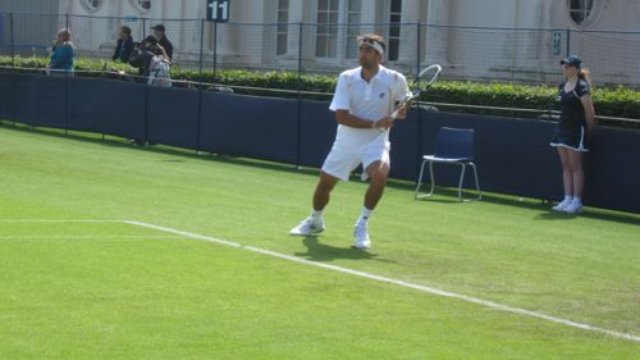Loughborough University Named As New Tennis Academy
12 June 2018, 17:40 | Updated: 13 June 2018, 16:47

The East Midlands university has been chosen along with Stirling to form two national academies of excellence.
Loughborough University and Stirling have been named as the sites of two national academies that will form the centrepiece of the Lawn Tennis Association's new high performance pathway.
The strategy, unveiled at the National Tennis Centre in Roehampton on Tuesday, is the LTA's latest attempt at producing a system that will create British strength in depth at the top of the sport.
It has been a long time coming, with the high performance department in flux under the stewardship of former chief executive Michael Downey and the new pathway then delayed by Downey's resignation and the appointment of Scott Lloyd as his successor.
Downey prioritised grass roots and decentralised high performance following the big-spending and much-criticised efforts of his predecessor Roger Draper to grow the number of top-100 players from Britain.
This strategy, the brainchild of performance director Simon Timson, who moved from the same position at UK Sport two years ago, very much goes back to a centralised approach, beginning with children aged seven.
It is envisaged 2-3,000 children between seven and 10 will hone their skills at local player development centres and take part in county training before the best 250-300 move on to one of 11 regional player development centres.
There will then be a maximum of 32 residential places available at Stirling and Loughborough from September 2019 for those players aged 13-18 - or potentially as young as 11 - deemed to have potential to reach the top.
They will attend a local school alongside their tennis commitments and, addressing one of the key barriers to what is a notoriously expensive sport to pursue, the places will be funded to cap the cost to players or their families at £5,000 a year.
Applicants for the academies were not given a budget but asked to come up with a vision and say how much it would cost, and Timson and Lloyd refused to reveal the amount of money the LTA has committed to each centre over five years, only that it is a significant proportion of the high-performance budget.
They are also steering clear of putting a figure on the number of top-100 players they hope to see in 10 years' time, which became a millstone around Draper's neck following the announcement of an earlier strategy.
Instead the focus is on establishing Britain's reputation as a world-class base for player development - although unlike renowned academies such as Nick Bollettieri's in Florida, Sanchez-Casal in Spain (where Andy Murray trained) or Patrick Mouratoglou's in France - foreign players will not be welcomed.
"The first thing we have to do is get in the conversation," said Timson.
The LTA has been accused of not doing enough to capitalise on the success of Murray and tellingly Tennis Scotland will oversee not just the national academy but also a regional development centre, with bases at Stirling, Edinburgh and Glasgow.
National coach Colin Fleming, a former doubles specialist who played a key role in Britain's recent Davis Cup success, said: "Everything the Murrays have achieved - Andy, Jamie and Judy - at growing the game in Scotland has created a huge interest in tennis. We're really passionate about capitalising on that legacy."
Critics will point to a south-east bias among the regional development centres - five of the 11 are in or around London - while there are unlikely to be clay courts, regarded as the best developmental surface, at either Loughborough or Stirling.
Central to the pathway's success, meanwhile, will be finding the right head coaches for both academies, who are very likely to be recruited from outside the UK.
But the LTA insist no previous strategy has been as comprehensively researched and planned, with Lloyd saying: "We're incredibly excited about what this can do."







